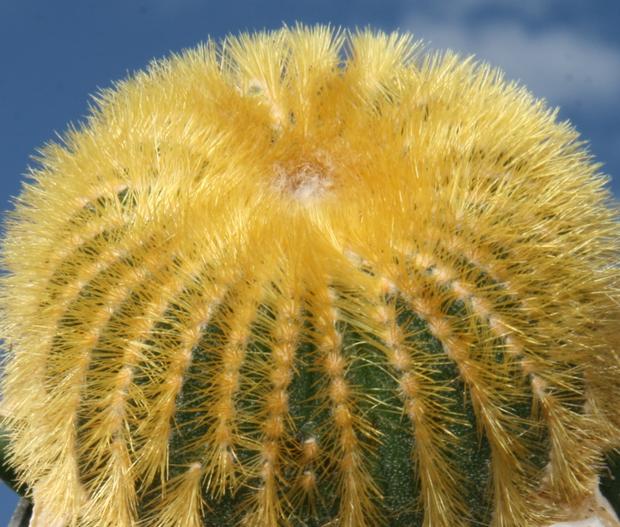Pectinate Uebelmannia
(Uebelmannia pectinifera)
Pectinate Uebelmannia (Uebelmannia pectinifera)
/
/

PierreBraun
CC BY-SA 4.0
Image By:
PierreBraun
Recorded By:
Copyright:
CC BY-SA 4.0
Copyright Notice:
Photo by: PierreBraun | License Type: CC BY-SA 4.0 | License URL: https://creativecommons.org/licenses/by-sa/4.0 | Uploader: PierreBraun | Publisher: Wikipedia Commons














Estimated Native Range
Summary
Uebelmannia pectinifera, commonly known as the Pectinate Uebelmannia, is a cactus endemic to the rocky fields and cerrado, which is a type of dry savanna, of Minas Gerais in Brazil. It is found at elevations between 2133 to 4429 feet, where it experiences a climate with distinct wet and dry seasons. This cactus typically has a solitary, globular form when young, gradually becoming more columnar as it matures, with heights reaching up to 39 inches and diameters around 6 inches. The plant’s body is dark reddish-brown to grayish, covered with waxy white scales that help reduce water loss. It is characterized by its 15 to 40 sharp-edged ribs adorned with brown to almost black spines that can extend up to 1 inch long. During the summer, Uebelmannia pectinifera produces light yellow, funnel-shaped flowers that add to its ornamental value, followed by distinctive pear-shaped fruits that are purple-red and contain small black seeds.
The Pectinate Uebelmannia is valued for its unique appearance and is often cultivated by cactus enthusiasts. It requires well-draining soil, minimal water, and full sun to partial shade conditions, mimicking its native habitat. While it is relatively low-maintenance, it is susceptible to root rot if overwatered. In cultivation, it is primarily used as a potted specimen, adding a sculptural element to collections. Due to its rarity and the threat of habitat loss in its native range, it is also a plant of conservation interest.CC BY-SA 4.0
The Pectinate Uebelmannia is valued for its unique appearance and is often cultivated by cactus enthusiasts. It requires well-draining soil, minimal water, and full sun to partial shade conditions, mimicking its native habitat. While it is relatively low-maintenance, it is susceptible to root rot if overwatered. In cultivation, it is primarily used as a potted specimen, adding a sculptural element to collections. Due to its rarity and the threat of habitat loss in its native range, it is also a plant of conservation interest.CC BY-SA 4.0
Plant Description
- Plant Type: Succulent
- Height: 0.3-0.5 feet
- Width: 0.5-1 feet
- Growth Rate: Slow
- Flower Color: Yellow
- Flowering Season: Fall
- Leaf Retention: Evergreen
Growth Requirements
- Sun: Full Sun, Part Shade
- Water: Low
- Drainage: Fast
Common Uses
Low Maintenance, Potted Plant, Rock Garden
Natural Habitat
Endemic to the rocky fields and cerrado of Minas Gerais in Brazil
Other Names
Common Names: Comb Cactus
Scientific Names: , Uebelmannia pectinifera, Uebelmannia pectinifera subsp. flavispina, Uebelmannia pectinifera subsp. horrida, Uebelmannia pectinifera var. multicostata, Uebelmannia pectinifera var. pseudopectinifera,
GBIF Accepted Name: